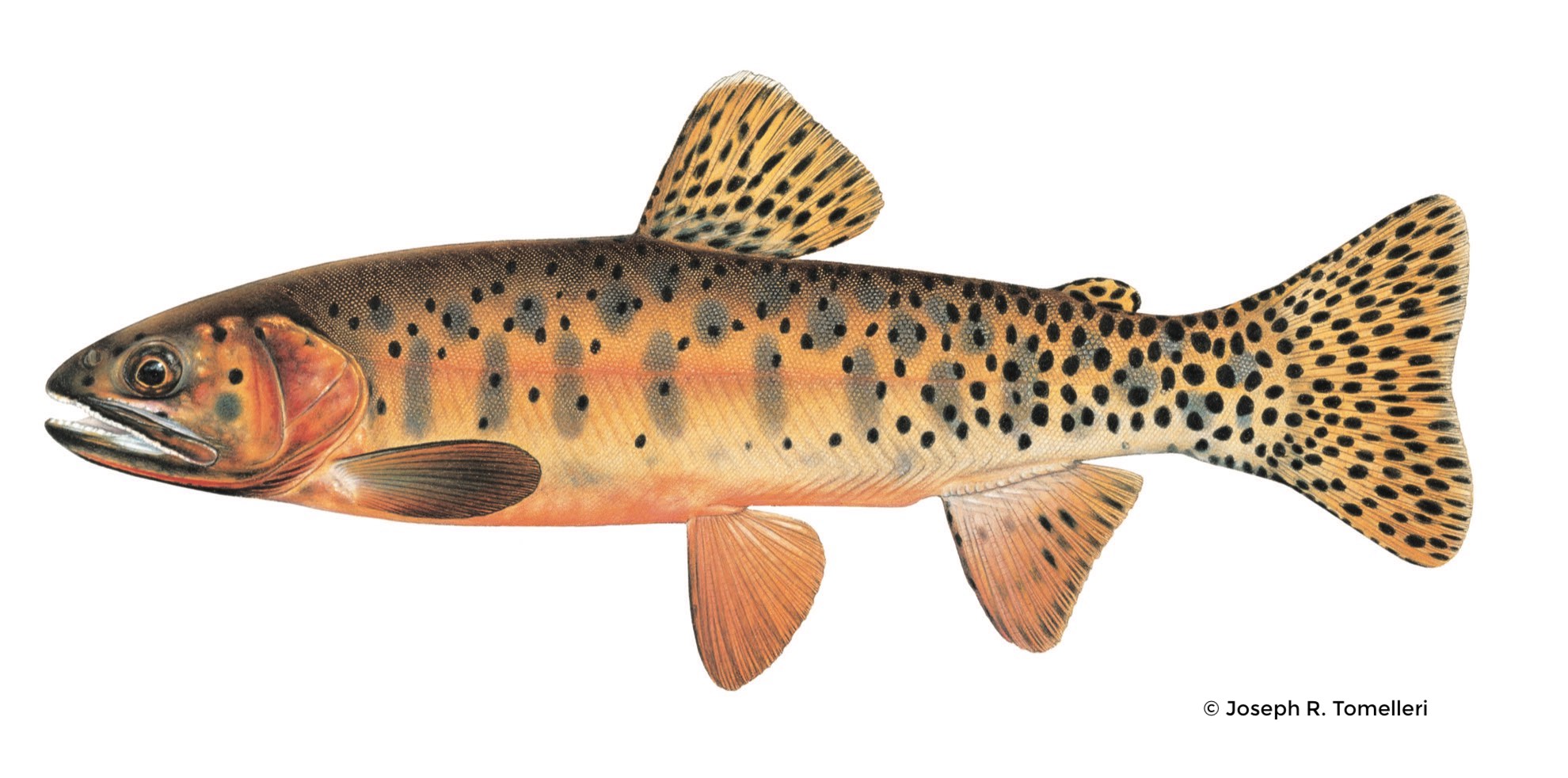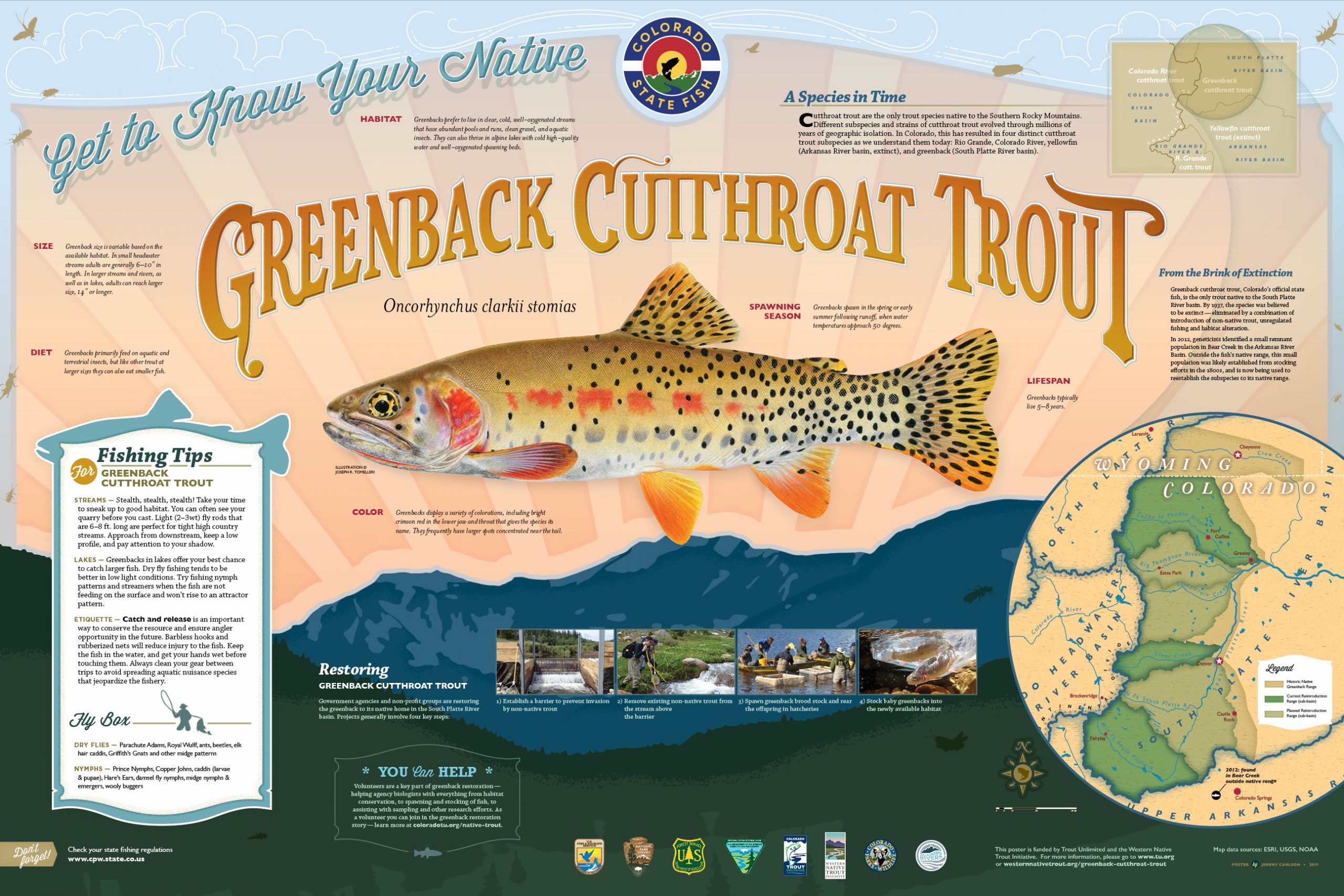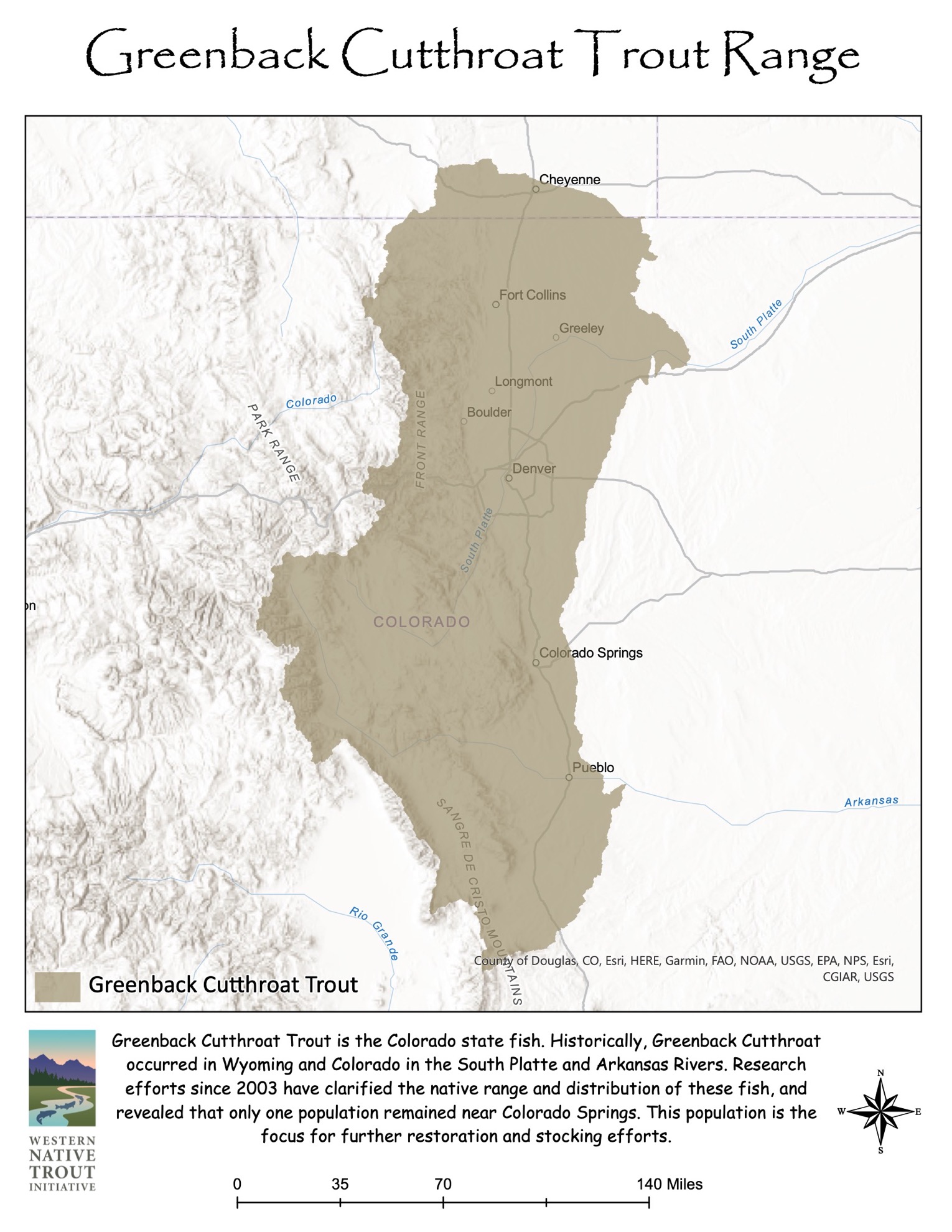
Colorado’s State Fish, Greenback Cutthroat Trout are native to the Arkansas and South Platte River basins in Colorado’s Front Range mountains, and a few South Platte tributaries in extreme southeastern Wyoming. The Greenback Cutthroat Trout was listed as an endangered species on March 11, 1967 (32 FR 4001). It was downlisted to threatened on April 18, 1978, as conservation efforts conducted by state and federal agencies had restored the species to the point where it was no longer deemed endangered (43 FR 16343 16345). The downlisting allowed for “take” of Greenback
Cutthroat Trout in accordance with state laws in Colorado. The Greenback Cutthroat Trout’s maximum size is 18 inches, and it has the largest spots of all cutthroats. Despite its name, the Greenback Cutthroat’s back is not particularly green.
Our understanding and knowledge of the distribution and status of cutthroat trout in Colorado have changed dramatically in the past decade. Historically, Greenback Cutthroat Trout (GBCT) were thought to occupy the South Platte and Arkansas River basins in eastern Colorado. Colorado River Cutthroat Trout (Oncorhynchus clarkii pleuriticus) were believed to occupy high elevation streams and lakes in western Colorado — with the Continental Divide serving as a geographic barrier separating the two subspecies. A third subspecies, the Rio Grande Cutthroat Trout (Oncorhynchus clarkii virginalis), was found exclusively in the Rio Grande River basin. Concerted research efforts starting in 2003 have since further clarified the native distribution of these fish culminating in 2012 with a study that combined an extensive search of remaining stocking histories combined with molecular analysis of museum specimens collected up to 150 years ago and extant populations (Metcalf et al. 2012). This research concluded that GBCT were native only to the South Platte River basin, and surprisingly, that only a single population remained. This population in Bear Creek near Colorado Springs appears to have been founded from stock collected in the South Platte River basin in the late 1800’s. These fish have survived as an isolated self-sustaining pure population of GBCT above a natural waterfall in just four miles of habitat for over 130 years. Based on Metcalf’s (2012) findings, and a more recent study that demonstrated Bear Creek fish are visually distinct from other cutthroat trout (Bestgen et al. 2013), current GBCT recovery efforts are now focused on replicating the Bear Creek GBCT in hatcheries and re-establishing populations within their native South Platte River basin.
Between 2010 and 2021, the Western Native Trout Initiative has provided $159,578 in funding to 12 projects to benefit Greenback Cutthroat Trout habitat conservation.


Additional Resources
Videos
- WATCH Greenback Cutthroat Trout in Bear Creek, Colorado, courtesy of Colorado Parks and Wildlife biologists.
- WATCH Greenback Cutthroat Trout transplanted to their native habitat by Colorado Parks and Wildlife.
Volunteers from the Cheyenne Mountain Chapter of Trout Unlimited have created a number of videos of Greenback Cutthroat Trout:
- Click here to watch “Dream of Greenback”.
- WATCH “Bear Creek Greenback fishing record spring runoff 27 May 2015”
- WATCH “A rainy fall day with the Greenbacks in Bear Creek”
- Watch “Winter arrives at Bear Creek”
